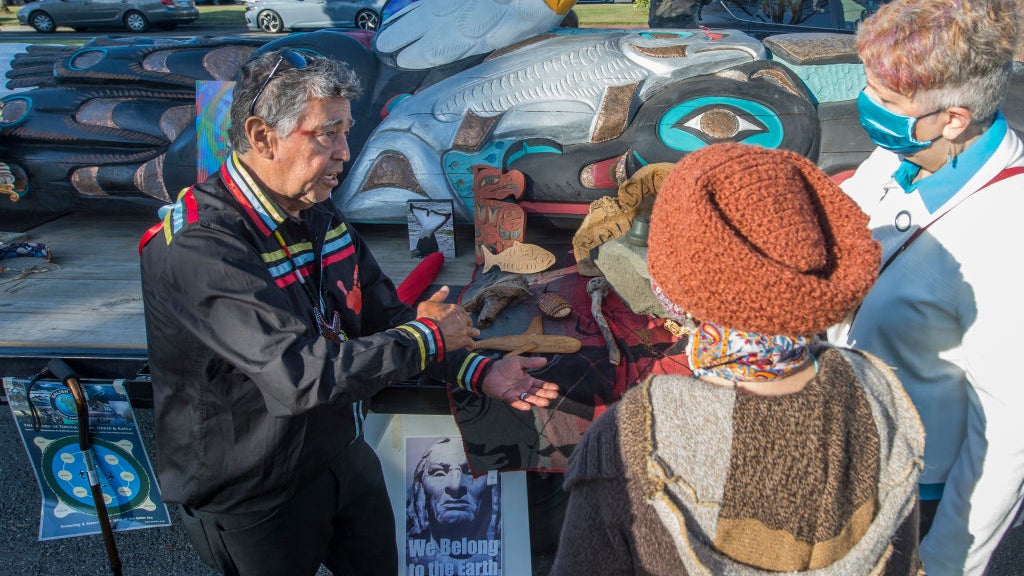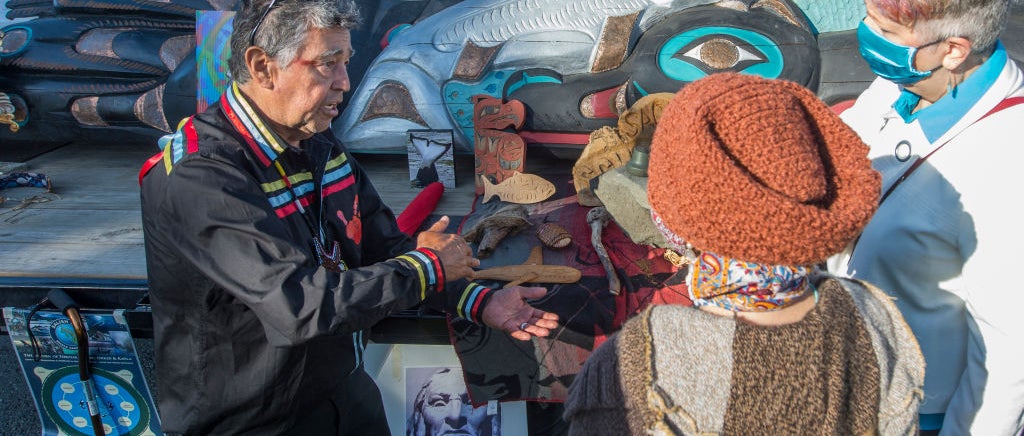The House of Tears Carvers of the Lummi Nation are traveling across the U.S. in a span of two weeks to bring light to issues affecting their communities.
An Indigenous group has planned a two-week national tour with their totem pole, ending in Washington D.C.
Totem poles have cultural relevance to different Indigenous groups and take incredible skill to construct, with this particular one having taken over two months to complete.
The House of Tears Carvers — a group from the Lummi Nation (one of the original inhabitants of the Pacific Northwest) — considers totem poles a vehicle for healing and storytelling in addition to works of art. The pole includes details showing their commitment to social justice and the Earth’s ecosystem, an acknowledgement of generational trauma, as well as power, strength, and a nod to Grandmother Moon, according to CNN.
This importance is being showcased this year through the “Red Road to DC”, a tour set to span two weeks, where the House of Tears of Carvers will take their totem pole, created from a 400-year-old Western Red Cedar tree, across the U.S.
The organizers of the trip will begin in Washington State on July 14, and stop with the 25-foot, 5,000-pound pole at different sacred sites along the way to Washington D.C. where battles over land and water rights are playing out, including Bears Ears in Utah, the Black Hills in South Dakota and the Standing Rock Sioux Reservation in North Dakota.
Ultimately, the goal is to not only bring healing to these sacred areas, but to raise awareness about the issues that affect Indigenous communities. "By going out and uniting and informing the public, we create a greater voice," Jewell "Praying Wolf" James, House of Tears lead carver and a citizen of the Lummi Nation said to the outlet.
"We have an opinion, and we want to be heard."
This is not the first time the House of Tears Carvers have taken their totem pole through the U.S. James first started after 9/11, traveling with other Lummi Nation members to New York as a way to honor the children who had lost their parents.
James has made several journeys after 2001, “...in an effort to alleviate pain tied to trauma, achieve social and environmental justice and fight for tribal sovereignty.” according to CNN.
The end of their journey will conclude in a display at the National Mall outside the Smithsonian in D.C. While the display is outside, organizers will also be lobbying inside on Capitol Hill, pushing for adequate Indigenous inclusion for bills that affect their communities.
According to CNN, the totem pole will be on display for two days and then transferred to its permanent home, the location of which has not yet been announced.







